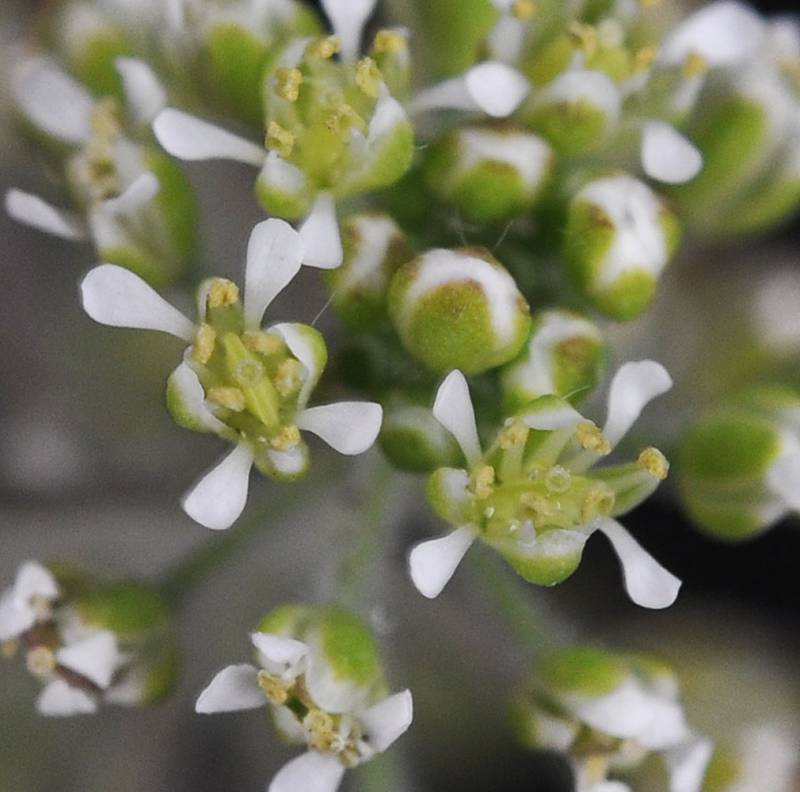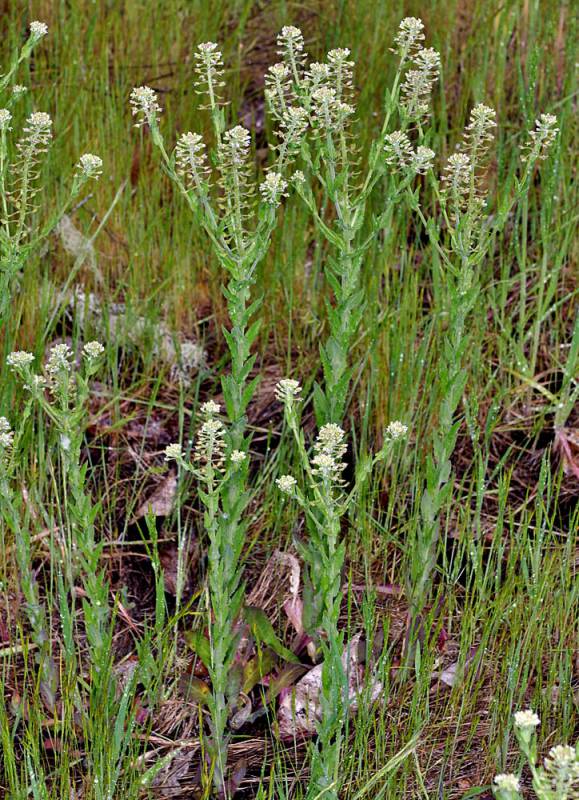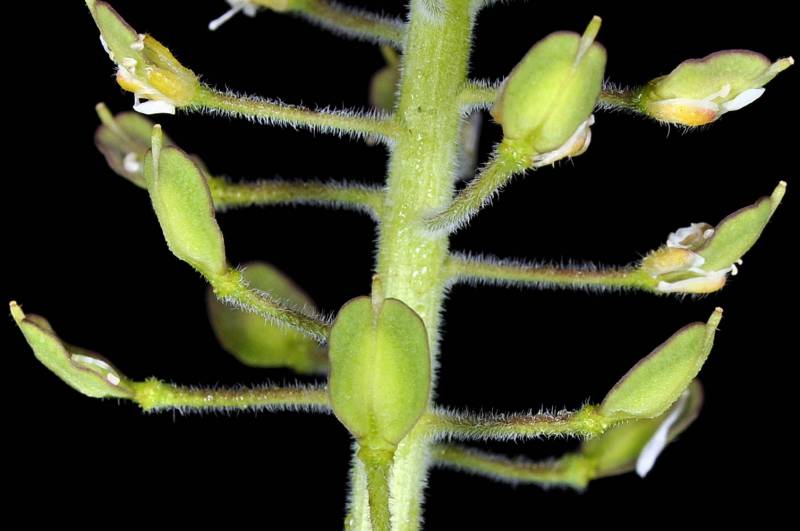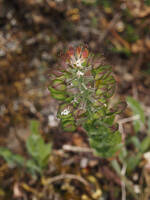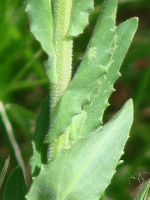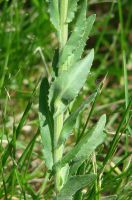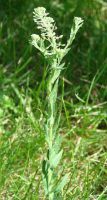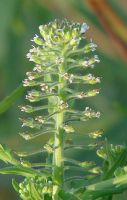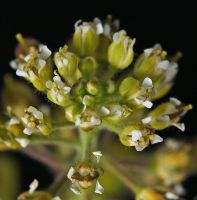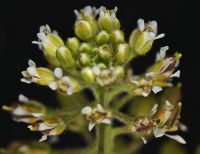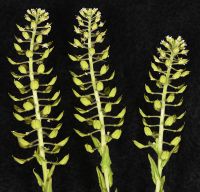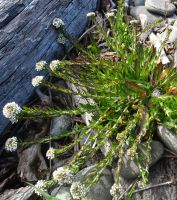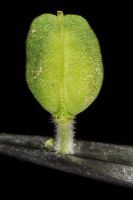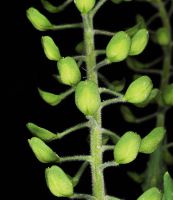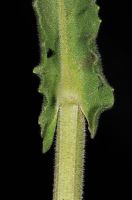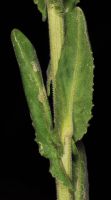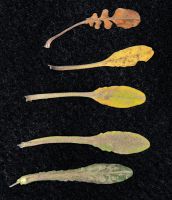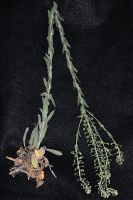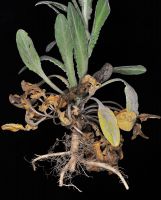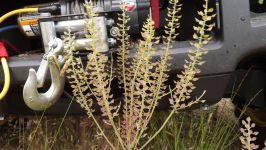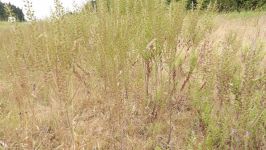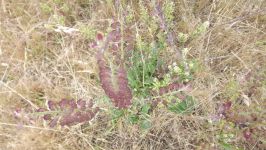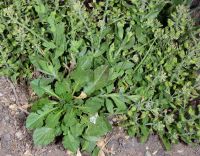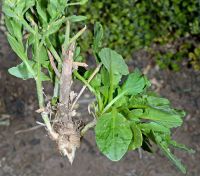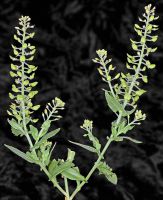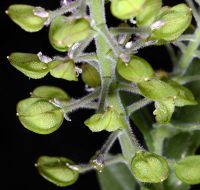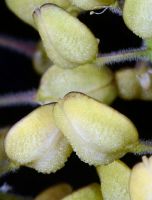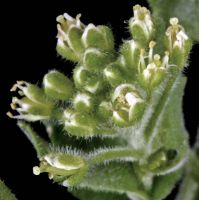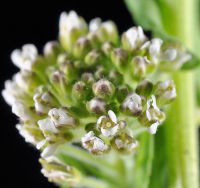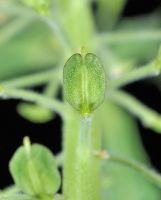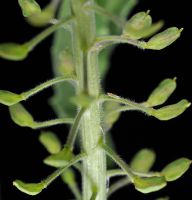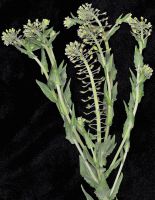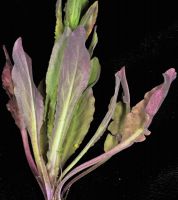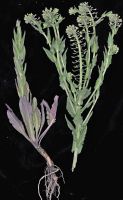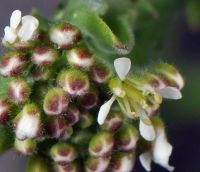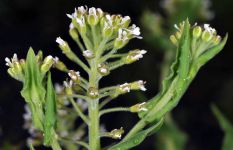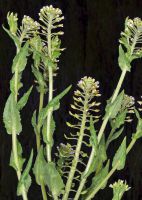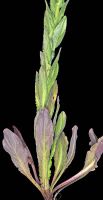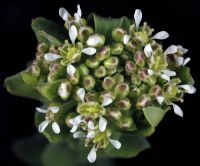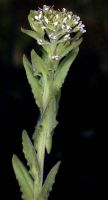Distribution: Occurring on both sides of the Cascades crest in Washington; British Columbia to California, east across most of North America to the Atlantic Coast.
Habitat: Roadsides, fields, meadows, river and stream banks, wastelots, and other distrubed open, often dry soils.
Flowers: May-July
Origin: Introduced from Eurasia
Growth Duration: Annual, Biennial
Conservation Status: Not of concern
Pollination: Bumblebees, bees, flies, beetles, wasps
Somewhat grayish annual, the stems simple to freely-branched, 2-5 dm. tall, densely short-villous.
Basal leaves in a rosette, petiolate, oblanceolate, 4-12 cm. long and up to 12 mm. broad, entire to lyrate; cauline leaves alternate, numerous, broader than the basal, oblong-lanceolate, denticulate, sessile and strongly auriculate-clasping.
Inflorescence of bractless, simple or compound racemes; pedicles spreading, slightly flattened, about equaling the fruits; sepals 4, 1.5-2 mm. long, often pinkish, early-deciduous; petals 4, white, 2-2.5 mm. long; stamens 6; style 0.2-0.6 mm. long.
Silicles oblong-ovate, strongly obcompressed, 5-6 mm. long and up to 4 mm. broad, covered with small blisters, the margins and tip winged and upturned, the apex slightly notched.
Publication: Hortus Kew. 4: 88. 1812.
Thlaspi campestre L.
PNW Herbaria: Specimen records of Lepidium campestre in the Consortium of Pacific Northwest Herbaria database
WA Flora Checklist: Lepidium campestre checklist entry
OregonFlora: Lepidium campestre information
E-Flora BC: Lepidium campestre atlas page
CalPhotos: Lepidium campestre photos

